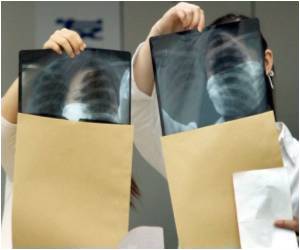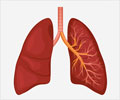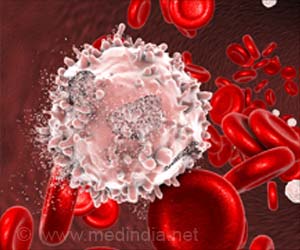While many 16-year-olds are content with PlayStation, Toronto-area student Marshall Zhang used the Canadian SCINET supercomputing network to invent a new drug cocktail which could

Jonathan Khouzam, Simon Leclerc, Francis Marcogliese, all 19, of Montreal's CÉGEP Collège Jean-de-Brébeuf, won the 2nd place prize for finding a way to produce a great sorbet without geletin, potentially opening a large new vegetarian market for the popular frozen dessert. Geletin is derived from the skin and bones of animals.
First and second place winners receive $5,000 and $4,000 respectively. The trio from Montreal also won a special $1,000 prize for the project deemed by the judges to have the greatest commercial potential.
Marshall and the Montreal team will compete against US and Australian teams at the International BioGENEius Challenge in Washington, DC, June 27, held in conjunction with the Biotechnology Industry Organization's (BIO) Annual International Convention.
The other top prizes were collected by:
- 3rd place ($3,000): Shannon Watson, 18, a Grade 12 student at Ottawa's Cantebury High School, who identified bacteria in a pro-biotic fermented milk product from Zambia that inhibit the growth of antibiotic-resistant bacteria; Advertisement
- 4th place ($2,000): Yasamin Mahjoub, 16, a Grade 11 student at Sir Winston Churchill High School, Calgary, who showed that hormones produced by pregnant women protect neurons from the effects of iron accumulation in the brain, suggesting a new line of inquiry into the causes and treatment of multiple sclerosis; and
- 5th place ($1,000): Siyuan Cheng, 14, a Grade 9 student at Fort Richmond Collegiate, Winnipeg, who combined the standard drug treatment for leukaemia with a lung cancer drug to greatly increase the numbers of leukemia cells being killed.
Advertisement
On Monday, remarkable students from every province presented the judges with 14 truly cutting-edge biotechnology projects related to health, agriculture and the environment. All were previous prize-winners at regional SABC competitions held across Canada in April.
All 13 to 19 years old and enrolled in Grades 9 through 12, the students were mentored by university professors and others who volunteer their expertise and many hours over several months each year to assist these young researchers.
How a 16-year-old used a supercomputer to find a promising new treatment for cystic fibrosis
Grade 11 student Marshall Zhang impressed many experts when he used the Canadian SCINET supercomputing network to discover a new and potentially effective drug cocktail to treat cystic fibrosis.
The results demonstrated the usefulness of computer-based approaches to discover drug-like compounds.
"Marshall's findings show that computational methods can drive the discovery of compounds that may offer effective treatment for cystic fibrosis," says his project mentor Dr. Christine Bear, a researcher at the Hospital for Sick Children's Research Institute.
CF is a common genetic disease where the lungs' normal protective coating of thin mucus becomes thick and sticky -- an inviting environment for serious, sometimes fatal bacterial infections. A genetic mutation is responsible for most cases of CF. Leading research currently in clinical trials suggests that specific drugs may help correct this defect.
At Dr. Bear's lab at Sick Kids, Marshall used sophisticated SCINET computer modeling to investigate what these drugs might be doing to 'correct' the genetic defect at the molecular level. On the computer, he identified how two drugs each interacted with one specific part of the mutant protein. He then proved his 'virtual' findings were correct using living cells in culture.
Marshall correctly suspected that using two drugs together might prove more effective because they interacted with different parts of the mutant protein.
"The cells treated with the two drugs were functioning as if they were the cells of healthy individuals," says Marshall.
"The thrill of knowing that I was on the forefront of current knowledge was absolutely the best thing about my experience," says Marshall, adding that the lab work and "getting a taste of real research has definitely driven me towards pursuing science in the future."
"I think that Marshall has tremendous potential to be a scientist in the future because of his intelligence, motivation and determination," adds Dr. Bear.
Source-Eurekalert











